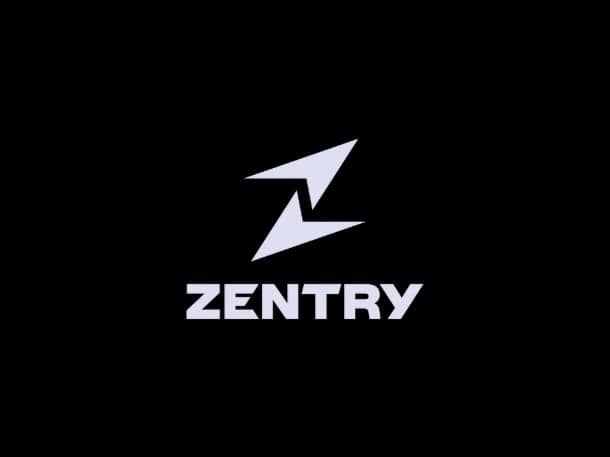订阅 wiki
Share wiki
Bookmark
Zentry
Zentry
Zentry 是一个 加密货币 和 AI 基础设施项目,被描述为一个旨在促进人类和人工智能共同进化的人机操作系统。该项目于 2024 年从 GuildFi 更名而来,旨在通过将人类活动转化为结构化数据来训练和增强 AI 代理,从而创建一个用户拥有的数据经济。[1] [2]
概述
Zentry 的核心使命是为其所谓的“新人类-AI 文明”构建基础架构。该项目的核心论点是,当前 AI 模型受到其对静态、过时数据集的依赖的限制。为了解决这个问题,Zentry 提出了一个系统,该系统利用“实时数据”,即来自实时人类行为和交互的新鲜、上下文信号,来驱动一个永恒的智能引擎。该系统被设计为一个自我强化的循环:人类参与 Zentry 的应用程序会生成高质量的数据;这些数据用于训练和改进 AI 代理;而这些增强的 AI 代理反过来又会放大人类的能力,并在生态系统中创造新的价值。[3] [4]
该项目将其模型与传统平台(为了自身利益而将用户数据货币化)进行了对比。相反,Zentry 旨在建立一个用户拥有的经济体,参与者因其数据贡献而获得奖励,并从他们帮助创建的集体智能中受益。整个生态系统建立在一个垂直整合的三层架构之上,该架构被称为 Zentry Stack。[5]
该项目以前被称为 GuildFi,一个 Web3 游戏平台。2024 年 4 月,它进行了全面的品牌重塑,更名为 Zentry,以反映其对游戏、社交平台和 AI 融合的更广泛关注。此次转型包括从 GF 代币到新的 ZENT 代币的代币迁移。[6]
历史
该项目最初作为 GuildFi 推出,这是一个专注于构建 Web3 游戏生态系统的平台。2024 年 4 月 23 日,该项目宣布正式更名为 Zentry,标志着其战略转向更广泛的愿景,包括 AI 和数据基础设施。此次品牌重塑包括代币迁移,持有者可以将原始 GF 代币以 1 GF 兑换 10 ZENT 的比例转换为新的 ZENT 代币。[6]
在品牌重塑之后,原始 GuildFi 平台于 2024 年 8 月 31 日正式关闭,以完成向新的 Zentry 生态系统的过渡。2025 年 8 月 29 日,该项目正式宣布“Zentry 时代”,公开详细说明了其构建人机操作系统的使命,并揭示了其核心技术堆栈和旗舰应用程序 zTerminal。[3] [7]
Zentry 新平台的 Beta 测试计划于 2024 年 9 月 20 日结束。随后于 2025 年 10 月 17 日推出了 zTerminal 的升级版本,具有增强的用户界面和 AI 响应能力。根据该项目的路线图,游戏元游戏 Radiant 的发布计划于 2024 年第三季度进行,随后是 NFT 集合 Zigma 于 2024 年第四季度发布,以及 AI 游戏代理 Azul 于 2025 年第一季度发布。[6] [7]
技术
Zentry 的基础设施建立在一个垂直整合的系统之上,该系统被称为 Zentry Stack,它由三个相互依赖的层组成,旨在创建一个连续的反馈循环,用于数据生成和智能复合。[4]
Zentry Stack
该架构旨在捕获来自人类活动的实时数据,使用它来增强 AI 代理,并将游戏化作为驱动参与的核心机制。[3]
zApp(应用层)
zApp 层是生态系统的面向用户的组件,由 AI 原生应用程序组成,这些应用程序是人类交互的主要界面。这些应用程序的设计考虑了游戏化、可编程分发和激励,以鼓励用户参与。在这些应用程序中产生的注意力、参与度和资本会产生“实时数据”,从而为堆栈的较低层提供动力。用户被定位为这些数据的来源和它所创造的价值的主要受益者。[4]
zAI(代理 AI 层)
zAI 层被描述为一个“可玩代理社会”,它充当 AI 代理 的 AI 工作室、协议和社交网络。它提供了一个合成环境,代理可以在其中自主进化,也可以通过与人类的协作和竞争进行交互。该层促进了 AI 代理的创建、代币化和协调,这些代理可以充当用户的个性化扩展,拥有模块化技能,并以嵌入式激励机制运行。目标是通过超个性化的智能来放大人类的潜力。截至 2025 年 8 月,zAI 层已上线,但处于私人测试阶段,有超过 30 个自组织代理接受了 240 亿个参数的训练。[3]
zData(数据层)
zData 是 Zentry 操作系统的基础数据骨干。其目的是通过提供连续的实时上下文数据流来克服静态 AI 训练数据集的局限性。该层聚合来自 100 多个来源的原始数据,包括 Zentry 的原生应用程序、链上活动、游戏交互和社交媒体。然后,这些数据通过一个三阶段的管道进行处理:
- 数据仓库: 在安全的、经过许可的环境中提取和存储原始数据信号,并在其中进行清理、格式化和时间戳记。
- 数据引擎: 使用自动化和人工审核相结合的方式来丰富原始数据、填补上下文空白并验证准确性。
- 数据中心: 将处理后的智能交付给生态系统,构建用户图以进行个性化,并通过 API、SDK 和预言机使开发人员可以访问数据。
截至 2025 年 9 月,zData 层管理着超过 296 TB 的数据,每天流式传输 970 GB 的数据供 AI 消费,并从超过 150,000 名用户那里收集了超过 1000 亿个信号。[5]
生态系统产品
Zentry 的生态系统包括一套原生应用程序和一个游戏发行部门。
- zTerminal: zApp 层的旗舰应用程序,被描述为“开放网络的代理终端”。它充当 AI 驱动的副驾驶和加密货币信息平台,将链上指标、市场数据和社交情绪集成到一个对话界面中。集成的 AI 助手 zAI 允许用户通过自然语言查询来执行研究并获得见解。[8] [7]
- Radiant: 一个“游戏门户”和游戏玩家奖励应用程序。它旨在允许用户将他们来自各种 Web2 和 Web3 游戏的玩法转化为被动收入,同时为生态系统生成有价值的游戏数据。[9]
- Zigma: 一个即将推出的实验性项目,专注于将 AI 原生 NFT、社区驱动的知识产权 (IP) 和“代理游戏”相结合,以创造新的娱乐形式。[4]
- Azul: 一个计划中的 AI 代理,专门为游戏应用程序设计。[6]
- Maxion: Zentry 的 Web3 游戏发行部门。通过 Maxion,该项目拥有多款游戏的 IP 权利,包括 Ragnarok 系列的游戏。[6]
代币经济学
Zentry 生态系统的原生代币是 ZENT,一种 ERC-20 代币,它也存在于其他 区块链 上。
- 供应量: ZENT 的最大供应量为 10,000,000,000 个代币,总供应量约为 97 亿个代币。[1]
- 多链存在: ZENT 代币可在多个 区块链 上使用,包括 Ethereum、Ronin、BNB 智能链 和 Base。[1]
- 实用性和治理: ZENT 代币在生态系统中具有多种功能:
- 代理货币: 充当服务和支付的主要交换媒介。
- 质押和奖励: 用户可以质押 ZENT 以赚取来自 Zentry 生态系统及其合作伙伴的奖励。
- 持有者特权: 为代币持有者解锁分层福利、奖励乘数和其他独家特权。
- 国库价值累积: 该代币旨在通过回购和重新分配等机制来捕获生态系统的经济价值。
- 治理: 授予持有者对有关协议升级、集成和激励结构的提案进行投票的权利。
在 2024 年 4 月的项目品牌重塑期间,ZENT 代币以 10:1 的比例取代了之前的 GF 代币。[6]
团队
Zentry 由 Jarindr Thitadilaka 和 Gazinpoj Techahuasingh 共同创立。Thitadilaka 以其在 区块链 技术和游戏生态系统方面的专业知识而闻名,而 Techahuasingh 则在软件开发和项目管理方面拥有背景。[6]
投资者
Zentry 得到了 Web3、游戏和 AI 领域的众多风险投资公司和公司的支持。其投资者包括 Coinbase Ventures、YZi Labs(前身为 Binance Labs)、Pantera Capital、DeFiance Capital、Animoca Brands、The Spartan Group、LongHash Ventures、SkyVision Capital、Play Ventures、Vessel Capital、Arche Fund 和 Synergis。[4] [1]
发现错误了吗?
